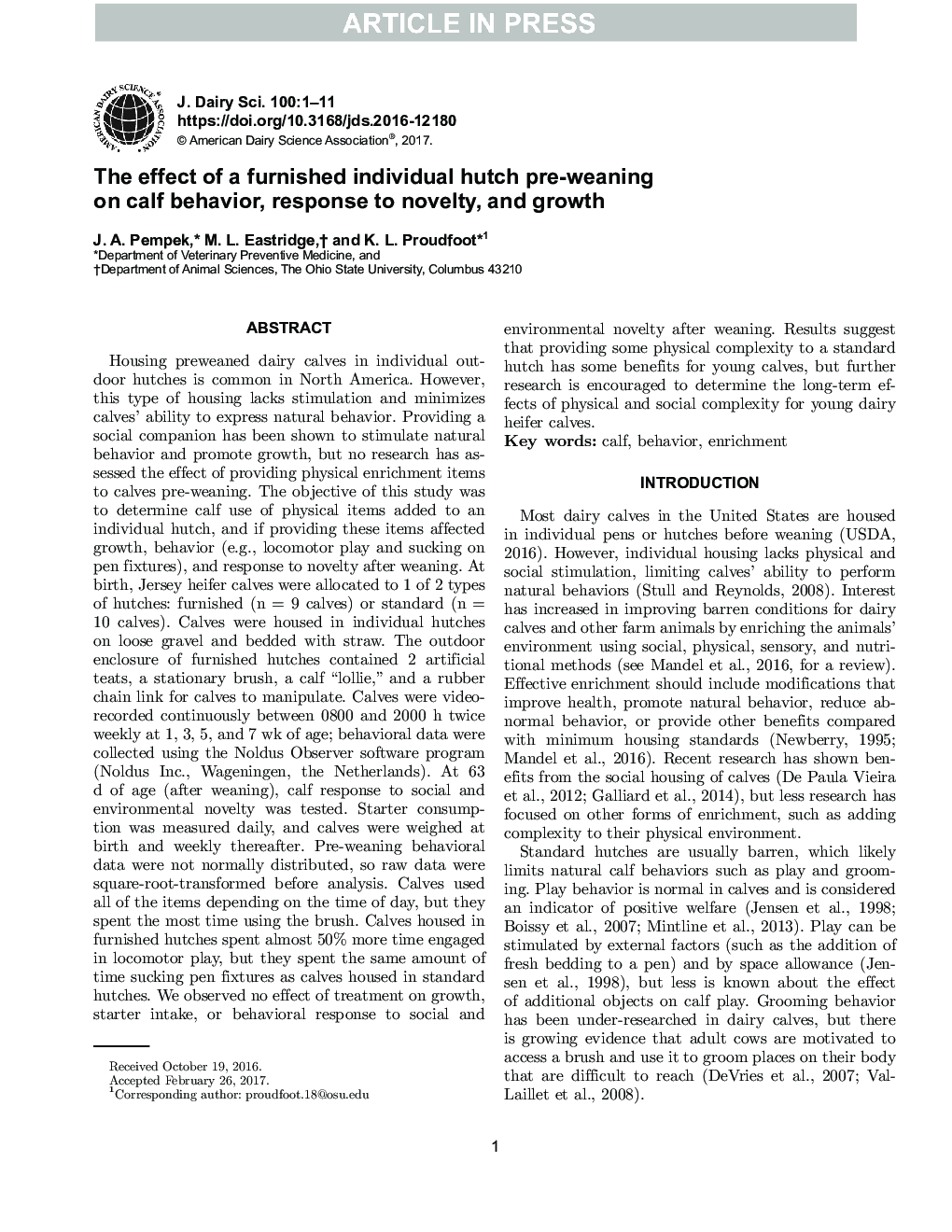| Article ID | Journal | Published Year | Pages | File Type |
|---|---|---|---|---|
| 5542271 | Journal of Dairy Science | 2017 | 11 Pages |
Abstract
Housing preweaned dairy calves in individual outdoor hutches is common in North America. However, this type of housing lacks stimulation and minimizes calves' ability to express natural behavior. Providing a social companion has been shown to stimulate natural behavior and promote growth, but no research has assessed the effect of providing physical enrichment items to calves pre-weaning. The objective of this study was to determine calf use of physical items added to an individual hutch, and if providing these items affected growth, behavior (e.g., locomotor play and sucking on pen fixtures), and response to novelty after weaning. At birth, Jersey heifer calves were allocated to 1 of 2 types of hutches: furnished (n = 9 calves) or standard (n = 10 calves). Calves were housed in individual hutches on loose gravel and bedded with straw. The outdoor enclosure of furnished hutches contained 2 artificial teats, a stationary brush, a calf “lollie,” and a rubber chain link for calves to manipulate. Calves were video-recorded continuously between 0800 and 2000 h twice weekly at 1, 3, 5, and 7 wk of age; behavioral data were collected using the Noldus Observer software program (Noldus Inc., Wageningen, the Netherlands). At 63 d of age (after weaning), calf response to social and environmental novelty was tested. Starter consumption was measured daily, and calves were weighed at birth and weekly thereafter. Pre-weaning behavioral data were not normally distributed, so raw data were square-root-transformed before analysis. Calves used all of the items depending on the time of day, but they spent the most time using the brush. Calves housed in furnished hutches spent almost 50% more time engaged in locomotor play, but they spent the same amount of time sucking pen fixtures as calves housed in standard hutches. We observed no effect of treatment on growth, starter intake, or behavioral response to social and environmental novelty after weaning. Results suggest that providing some physical complexity to a standard hutch has some benefits for young calves, but further research is encouraged to determine the long-term effects of physical and social complexity for young dairy heifer calves.
Keywords
Related Topics
Life Sciences
Agricultural and Biological Sciences
Animal Science and Zoology
Authors
J.A. Pempek, M.L. Eastridge, K.L. Proudfoot,
